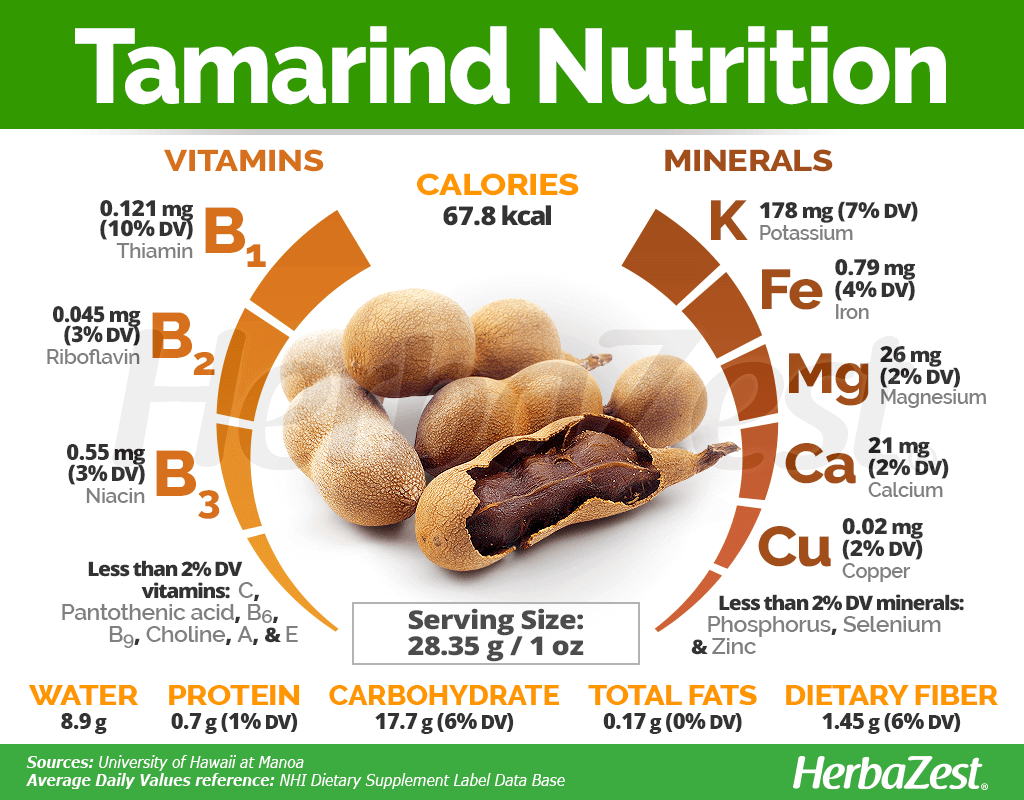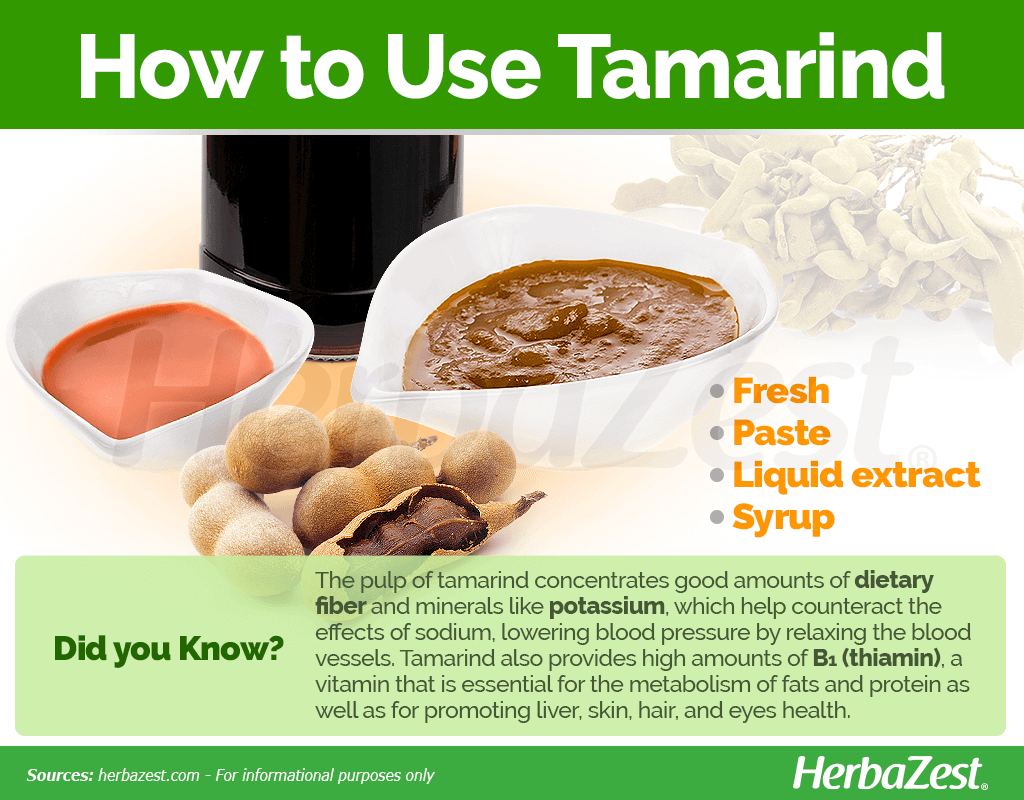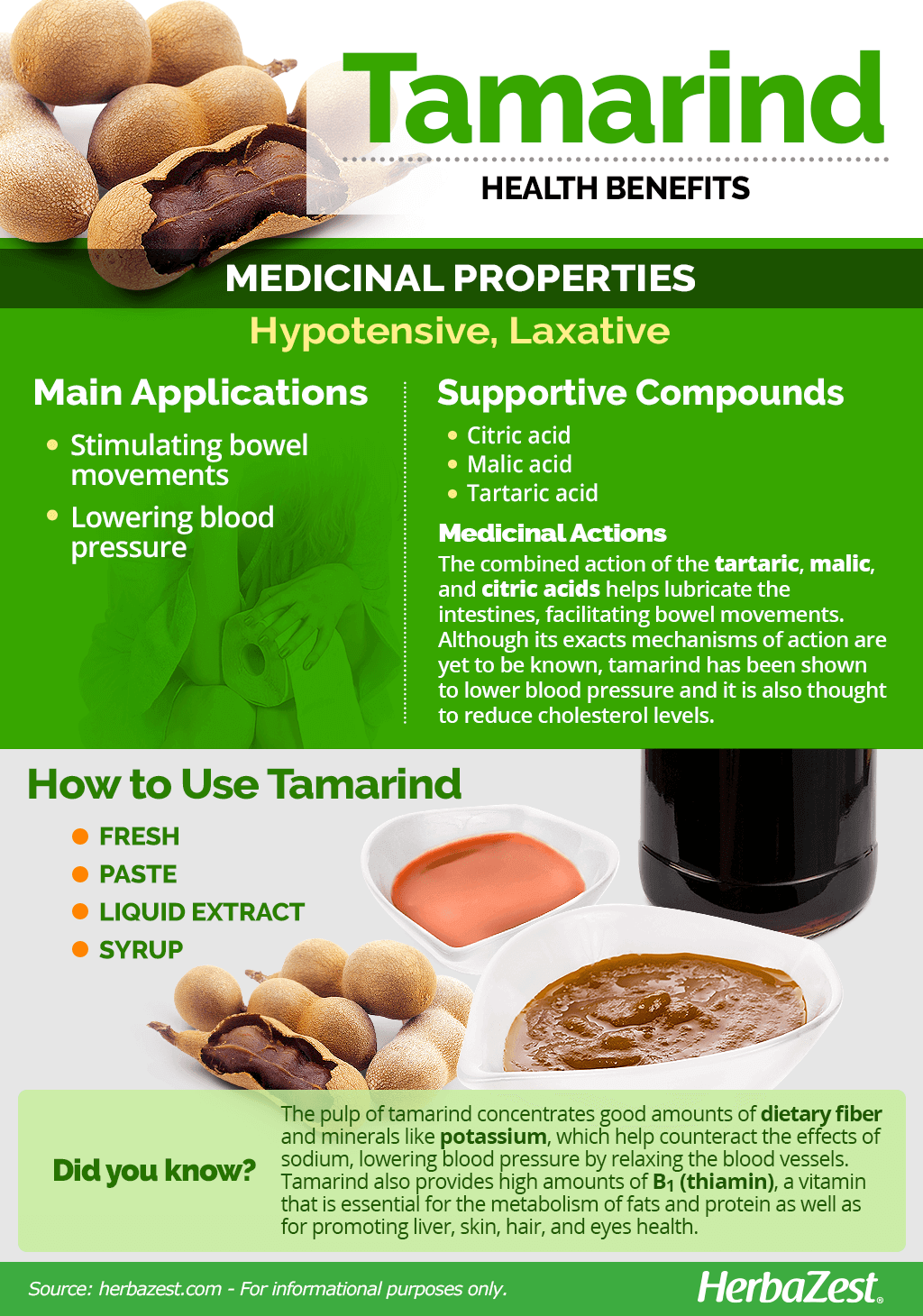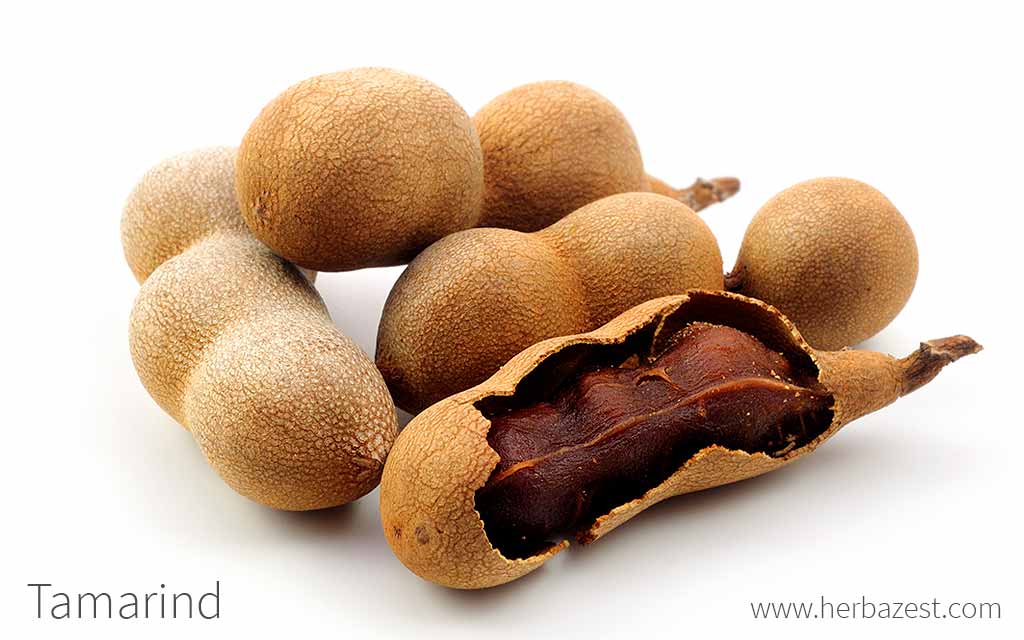Tamarind was first cultivated and consumed in Africa from where it spread across the world, becoming a popular choice in many cuisines. It was domesticated by humans over 2,500 years ago, with the earliest signs of its cultivation being traced back to ancient Egypt. Although it has now been adapted for growth throughout the world, tropical regions are its natural habitat.
Tamarind Medicinal Properties
Health Benefits of Tamarind
Tamarind properties have used medicinally for over 2,500 years, and modern research has corroborated its effectiveness for:
Stimulating bowel movements. The fruit of tamarind acts as a mild laxative because it contains high levels of organic acids.
Lowering blood pressure. Research has shown that extracts of tamarind can lower blood pressure.
Additionally, some studies have suggested that tamarind extract may help lowering harmful cholesterol levels, thus preventing arteries from clogging.
How It Works
Tamarind benefits can be attributed to its content of tartaric acid, malic acid, and citric acid, responsible for the famous laxative properties of this African fruit. The combined action of these acids helps lubricate the intestines, facilitating bowel movements.
Although its exact mechanisms of action are yet to be understood, tamarind fruit has been shown to lower blood pressure and is thought to reduce harmful cholesterol levels in the body.
In traditional medicine, tamarind is also used to fight fever, reduce abdominal pain, and treat wounds.
Other herbs that help regulate bowel movements are psyllium and senna.
Tamarin Side Effects
Tamarind fruit is likely safe for most people when taken by mouth. However, very little research has been done regarding its medicinal uses, so the potential side effects are unknown.
Cautions
While tamarind fruit is safe for most people, those who have diabetes should consume it with caution since it can lower blood sugar levels. Care must be taken when taking ibuprofen (Advil, Motrin) and tamarind, since this fruit may increase the absorption of the drug.1 It is also recommended that anyone who are scheduled for surgery should avoid using tamarind. For women who are pregnant or breastfeeding, very little is known regarding its potential side effects, so consulting a doctor before taking tamarind is recommended.
- Medicinal action Hypotensive, Laxative
- Key constituents Citric, malic, and tartaric acids
- Ways to use Liquid extracts, Food, Juiced, Syrup
- Medicinal rating (2) Minorly useful plant
- Safety ranking Safe

Tamarind Nutrition
The lack of thiamin can cause depression and confusion, as well as heart's enlargement and slowing. Other symptoms of thiamin deficiency, also known as beriberi disease, are irritability, loss of appetite, weakness, coordination problems, calves' pain, and tingling sensation throughout the body.2
Tamarind provides a great deal of nutrients; however, it should be consumed in small amounts due to its laxative properties. The pulp of tamarind concentrates good amounts of dietary fiber as well as essential minerals, such as potassium, which help counteract the effects of sodium, lowering blood pressure by relaxing the blood vessels; and iron, necessary for the production of red blood cells and for preventing anemia.
The fresh pulp of tamarind also contains all B complex vitamins, particularly high amounts of B1 (thiamin), which is essential for the metabolism of fats and protein as well as for promoting liver, skin, hair, and eyes health.
The nutritional profile of tamarind is rounded by smaller amounts of vitamin C along with minerals such as calcium, magnesium and copper.
An ounce of fresh tamarind pulp (28.35 g) provides about 68 calories as well as 6% of the recommended daily value for carbohydrates and dietary fiber.

How to Consume Tamarind
While this African fruit can be used for culinary purposes, the most effective way of obtaining the health benefits of tamarind is in medicinal forms of consumption, where its properties are more concentrated.
Natural Forms
Raw. Tamarind pods can be eaten fresh, mixed into smoothies, or prepared into other medicinal preparations for the relief of constipation.
Paste. When consumed as a paste, tamarind works best as a mild laxative because of its combination of nutrients and active compounds.
Herbal Remedies & Supplements
Liquid extract. Tamarind's extract works as a mild laxative because of its high concentration of tartaric, malic, and citric acids.
Syrup. When consumed as a syrup, tamarind works to regulate cholesterol levels.
- Edible parts Fruit
- Edible uses Coloring, Condiment
- Taste Tangy, Pungent

Growing
Tamarind seeds need to be initially planted in a nursery before transplanted to the field or garden. Though the tamarind plant has been adapted for growth in many different places and climates, it still requires tropical climate conditions with marked seasons in order to develop correctly.
Growing Guidelines
The tamarind tree will tolerate temperatures between 32 - 106°F (0 - 41°C) and will need between 20 - 60 inches (500 - 1,500 mm) of rainfall per year.
Regular irrigation is essential until the tamarind plant is established, and it will need weeding during the initial stages.
Like other members of the legume family, tamarind roots have a symbiotic relationship with rhizobia, beneficial bacteria that fix nitrogen in the soil. For this reason, it can be advantageous to grow tamarind in depleted soils or alongside other crops, thus furthering sustainable practices.
- Life cycle Perennial
- Harvested parts Fruit
- Light requirements Full sun
- Soil Medium (loam), Saline soil
- Soil pH 6.1 – 6.5 (Slightly acidic), 6.6 – 7.3 (Neutral), 7.4 – 7.8 (Slightly alkaline)
- Growing habitat Subtropical regions, Tropical rainforests
- USDA Plant Hardiness Zones 9b, 10a, 10b, 11a, 11b
- Potential insect pests Scale insects
Additional Information
Plant Biology
The tamarind tree (Tamarindus indica) is an evergreen that can grow 40 - 60 feet (12 - 18 m) high and just as wide. Tamarind produces fruits inside elongated pods. Its red or yellow flowers appear typically in the spring.
Classification
Tamarindus indica is a member of the Fabaceae or bean family, which contains over 19,400 species spread out over 730 genera, and includes many economically-important crops, such as soy (Glycine max), beans (Phaseolus vulgaris), peas (Pisum sativum), chickpeas (Cicer arietinum), peanut (Arachis hypogaea), and alfalfa (Medicago sativa).
Cultivars of Tamarind
There are some tamarind cultivars that taste sweeter than others. The most common type of sweet tamarind produced by the United States is known as the 'Manila Sweet', while the popular cultivar from Thailand is referred to as the 'Makham waan'. A number of areas regard fruits with reddish flesh as superior to those that come with the usual flesh-brown color.
Historical Information
Tamarind pulp was used in medicines by the ancient Arabians, and they were the ones who transferred the fruit across the Persian Gulf, where it began influencing cuisine in places such as Iran and Egypt. The earliest discovered reference to cultivated tamarind comes from the Indian Brahmasamhita scriptures, where it is mentioned that Egyptians were cultivating the fruit by at least 400 BCE. Its alimentary usage spread throughout Asia, Africa, and Europe, and by the 17th century, tamarind had been introduced to the Americas.
Economic Data
The India and Mexico are currently the largest producers and consumers of tamarind. India alone produces 275,500 tons of tamarind annually. Commercial plantations of tamarind can be found throughout South America, and its cultivation has been introduced in the United States for commercial purposes.
Popular Beliefs
Tamarind is the subject of many different superstitions worldwide. Very few plants can survive under a tamarind tree. According to superstition, it is considered harmful to sleep under or to tie a horse under a tamarind tree.
Other Uses of Tamarind
Housekeeping. Tamarind is often kept as an ornamental plant, and tamarind pulp can be used to remove tarnish from brass and copper.
Carpentry. The wood from the tamarind tree is used in carpentry to make furniture and wood flooring of a bold red color.
- Other uses Cleaning, Furniture/carpentry
Sources
- British Broadcasting Corporation, Glossary of food terms: Tamarind
- University of Florida, Fact Sheet: Tamarindus indica
- USDA Plants Database, Plant Profile for Tamarindus Indica
- Encyclopedia of Herbal Medicine
- FAOSTAT, Technologies and practices for small agricultural producers, 2013
- Medicinal Plants of the World, p. 317
- Pharmacognosy Reviews, Tamarindus indica: Extent of explored potential, 2011
Footnotes
1,2 George T. Grossberg, M.D., Barry Fox; The Essential Herb-Drug-Vitamin Interaction Guide, Broadway Books, NY; 2008





